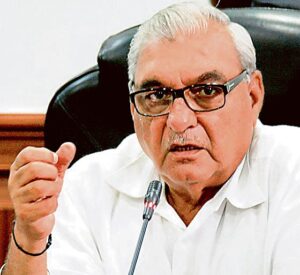Follow Me
TREATMENT OF AORTIC STENOSIS WITHOUT SURGERY
 Image Credits: https://www.financialexpress.com/
Image Credits: https://www.financialexpress.com/During these corona times let’s not ignore cardiac ailments. Many elderlies in India suffer from Aortic Stenosis. This is a heart condition in which aortic valve of heart that pumps blood to whole body gets severely narrowed.
Aortic valve is a tri-leaflet like structure situated just at the origin of aorta from left ventricle of heart, which controls blood supply to whole of the body. Aortic valve stenosis is basically thickening and narrowing of aortic valve with advancing age.
When it reaches the stage of critical narrowing, heart is unable to pump blood to whole body resulting in easy fatigability, breathlessness, chest pain and sometimes syncope (transient loss of consciousness). It progresses through the stages when there are no symptoms in spite of severe narrowing to a stage when symptoms in form of chest pain, breathlessness and syncope start occurring.
For decades, the treatment for this type of condition was open heart surgical aortic valve replacement. It was a natural choice as no other option was available. For elderly patients and those who are not suitable or are at higher risk for surgery the only option left was medical management and wait for death. In about one third of patients suffering from this disease, the strain of surgical operation made the procedure out of question. This surgery is not suitable for many elderly patients and in those who have other co-morbidities. This was an unsatisfactory situation of not being able to offer any effective therapy to these patients.
The reason for narrowing of aortic valve is mainly age-related degeneration. Other reasons can be some abnormalities in structure of valve which are present since birth, there is mild narrowing which gradually progresses with advancing age. This condition is called bicuspid aortic valve, when there are only two cusps in place of usual three. Other causes can be some infective process involving the valve leading to thickening and narrowing of valve.
In stage of severe narrowing, but with no symptoms 80% patients remain alive after 1 year and 55% are alive after 5 years, risk of sudden death is about 1.5% per year. When even mild symptoms start to appear only 35% will remain alive after 5 years.
THERAPEUTIC OPTION TO INOPERABLE AND HIGH RISK FOR SURGERY PATIENTS

Trans catheter aortic valve implantation (TAVI) or Trans catheter aortic valve replacement (TAVR) has offered a solution to this dilemma by providing an effective therapeutic option to inoperable and high risk for surgery patients. The first ever successful TAVI in human being was done in 2002 by Prof Alain Cribier. Since then this procedure has made remarkable progress, and reached a level of offering a suitable alternative to surgery in select group of patients.
In the beginning TAVI got approval only for high risk and inoperable patients. In 2016 it got approval for intermediate risk and now it has proven its worth in terms of efficacy even in lower risk for surgery patients. It means that TAVI has become treatment of choice in inoperable, high risk and intermediate risk patients and a suitable alternative in low risk patients.
TAVI usually involves going through one of the arteries in groin as in angiography done earlier. Now most of angiography and angioplasty procedures are done through radial artery from wrist. The introducer sheath used in TAVI procedure is quite large bore as one has to take valve through it. It started with a much bigger sheath size in beginning but with gradual advancements in valve it has been gradually brought to much smaller size.
After the procedure hole in groin artery is closed with internal suture devices only, earlier it had to be cut open through surgery. Patients are usually discharged on 3rd day of the procedure.
Aortic stenosis is the most common form of valve problem in elderly and if left untreated is often fatal. Timely intervention to replace valve can improve symptoms and prolong life. With advancements in medical technologies and introduction of TAVI the non-surgical technique for aortic valve replacement, there is definite ray of hope for inoperable, elderly and debilitated patients and a suitable non-surgical alternative in other patients who are being planned for surgical aortic valve replacement.




